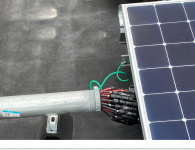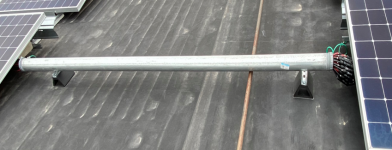NEC code says that the conduit fill should be 31-40% for multiple cables. That will apply to all kinds of cable/jumpers?
These kinds of installations were found during today's site visit. The installation contractor was saying this jumper was installed per the NEC code.
This is the pathway crossing conduit from one string to another.


Thanks in Advanced.
These kinds of installations were found during today's site visit. The installation contractor was saying this jumper was installed per the NEC code.
This is the pathway crossing conduit from one string to another.


Thanks in Advanced.

